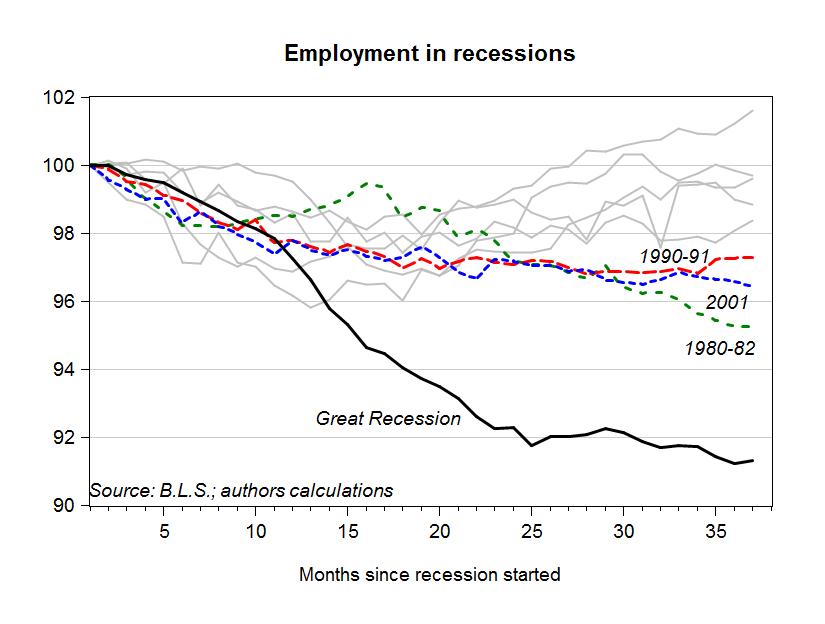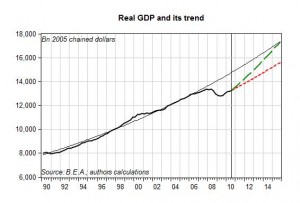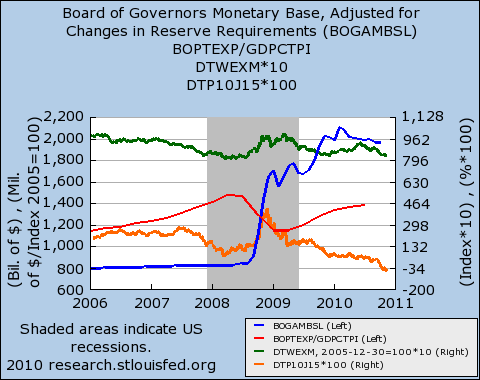L. Randall Wray | November 5, 2010
In recent weeks, the explanation for the financial and economic crisis that has gripped the world economy has shifted sharply from deregulation and lack of governmental oversight of financial institutions to fraud and criminal activity. In truth, the US Federal Bureau of Investigation began to warn of an “epidemic” of mortgage fraud back in 2004, and my colleague Bill Black has been pointing to the role played by fraud since the crisis began. (See our recent two part series at www.huffingtonpost.com.) To be sure, there was ample fraud in the “pump-and-dump” schemes during the dot-com bubble at the end of the 1990s, which was closely followed by the commodities market speculative boom and bust. (See my article at http://www.levyinstitute.org/publications/?docid=1094. ) And before those episodes we had in quick succession the developing country debt crisis of the early 1980s, the US Saving and Loan fiasco of mid 1980s (with bank crises in many other nations), the Japanese meltdown and the Asian crisis, the Mexican peso crisis, Long Term Capital Management and Russian default, and the Enron affair.
Seemingly, the crises have become more frequent and increasingly severe until almost the whole world was infected. It is obvious that there must be some link among these crises and that while fraud played a role in most or even all of them, it is not sufficient to lay blame on “bad apples”, bad policy, insufficient foresight, and outright stupidity. We must find a more comprehensive explanation.
When the crisis began in the US in 2007, many commentators called it a “Minsky moment” or even “Minsky crisis”, after the late economist Hyman Minsky who had developed what he called a “financial instability hypothesis” over the years after 1960 and to his death in 1996. Minsky was my PhD dissertation advisor and I had already used his approach to analyze the Saving and Loan crisis. Unlike the typical explanation that invokes Minsky’s theories, I recognized that Minsky did not simply provide a “euphoric bubble” approach. Rather he argued that the transformation of the economy and especially its financial system from “robust” toward “fragility” took place over a very long span of time, indeed, over the entire postwar period. The increasingly frequent and severe crises, as well as the growth of fraud as practically normal business practice were a consequence of that transformation. Hence, we should not call this a Minsky moment or crisis but rather a Minsky half-century.
Much of the world emerged from the Great Depression and World War II with a combination of institutions, regulations, financial practices, and memories that together encouraged relatively rapid economic growth, high employment, growing incomes, and growing confidence in our future. Private debt was low (mostly wiped out in the bankruptcies of the 1930s), government debt was high (war finance), and the financial system had been “simplified” (in Minsky’s terminology). Big Corporations mostly used retained profits to finance expenditures; Big Unions kept wages growing so that workers could spend out of income rather than relying on debt; Big Government had filled portfolios of banks and savers with safe government bonds. Finance was kept small, constrained, and relatively irrelevant. Besides, memories of the Great Depression discouraged lending as well as borrowing. Strict regulation—especially in the US—kept risky financial practices segregated outside commercial banking.
Over time a complex combination of factors changed all that—memories faded, regulations were relaxed or financial institutions defeated them with innovations (including new types of instruments and institutions that took market share away from highly regulated banks). Private debt grew. Risky practices emerged. Financial crises resumed. However, the crises were contained by swift intervention of Big Government and the Big Bank (central bank)—that bailed-out institutions and prevented recessions from becoming sufficiently severe to eliminate the risky behavior. Relatively robust growth combined with stronger labor led to growth of pension funds and other private saving—money that needed to be invested to get high returns to support a private retirement system. Clever managers of that money developed increasingly esoteric and complex ways to make—and to lose—money.
The age of what Minsky called “money manager capitalism” had arrived—a form that put finance first. And, importantly, this new capitalism took a global form—a new globalization of finance developed. Again for complex reasons, the interests of money managers did not coincide with those of Big Corporations and Big Unions—the “leveraged buy-out” was used to strip firms of assets, load them with debt, and bust their unions. Wages stopped growing; consumers relied on debt to maintain living standards. Globalized finance also helped to globalize production—with low wage workers in developing nations helping to depress incomes in developed nations. Thus, “financialization” of the economies concurrently meant both “globalization” as well as rising inequality.
The weight of finance moved away from institutions—that were guided by a culture of developing relations with customers—toward “markets” (the “originate to distribute” model of securitizing pools of mortgages is a good example). This virtually eliminated underwriting (assessing credit worthiness of customers) and also favored the “short view” (immediate profits) of traders (you are only as good as your last trade) over the long view of financial institutions that hold loans. In addition, the philosophy of “maximization of total shareholder returns” as well as the transition away from partnerships in investment banking toward public holdings promoted pump and dump schemes to increase the value of stock options that rewarded CEOs and traders. A “trader mentality” triumphed, that encouraged practices based on the “zero sum” approach: in every trade there is a winner and a loser. As practiced, the bank would be the winner and the customer would be duped.
This transformation helps to explain why fraud became rampant as normal business practice. Competition among traders and top management to beat average returns led to ever lower underwriting standards to increase the volume of trades—with fees booked on each one—and with strong incentives to “cook the books” (record false accounting profits). Once accounting fraud is underway, there is a strong incentive to engage in ever more audacious fraud to cover the previous crimes. In the end, the US financial system (and perhaps many others) became nothing but a massive criminal conspiracy to defraud borrowers (through such instruments as “liar’s loans”, NINJAS—no income, no job, no assets, no problem!—and “no doc” loans) as well as investors in securitized products (mortgage backed securities, collateralized debt obligations that were securities of the worst MBSs, and on to CDOs squared and cubed). All of this led to layering and leveraging of debt on debt and debt on income. At the peak, US indebtedness was five times national income—meaning each dollar of income was pre-committed to service five dollars of debt! This was, of course, impossible. The pyramid of debt collapsed like a house of cards.
Where are we now? Many governments reacted with fiscal stimulus packages as well as bail-outs of financial systems. While many have proclaimed that the worst is behind, by all objective measures, nearing the end of 2010 the financial system is probably in worse shape than it was at the end of 2007 when it collapsed. Debt ratios have not come down appreciably. Defaults and delinquencies are up by huge amounts. In the US foreclosures have come to a virtual standstill as it has been recognized that many or perhaps most foreclosures that have taken place were almost certainly illegal. Holders of securitized products like MBSs and CDOs have begun to sue banks for fraud, demanding they take them back. While banks have reported strong earnings, almost all of these have been in trading activity or have resulted from reducing loss reserves (ironically, as defaults rise). In other words, none of the normal bank activity is generating revenue—all profits are accounting profits where it is easy to “cook the books”. Where it will all end is unknown but a complete collapse of the financial system is not out of the question.
This time around, it is not clear that governments will save the banks–having been burned last time around, voters are not sympathetic. Especially in the US the feeling is that Main Street’s needs have been ignored while Wall Street has been favored. And in most nations, government has adopted austerity policies to reduce spending and where possible to raise taxes. In some countries this appears to be necessary—such as the so-called “PIIGS” (Portugal, Ireland, Italy, Greece, Spain) that are heavily indebted with hands tied due to constraints imposed by the currency union. In others, such as the UK and the US it is mostly political—a reaction against the bail-outs of financial institutions. How this will all turn-out I do not know, but another crash and even deeper downturn seems likely.






 ShareThis
ShareThis